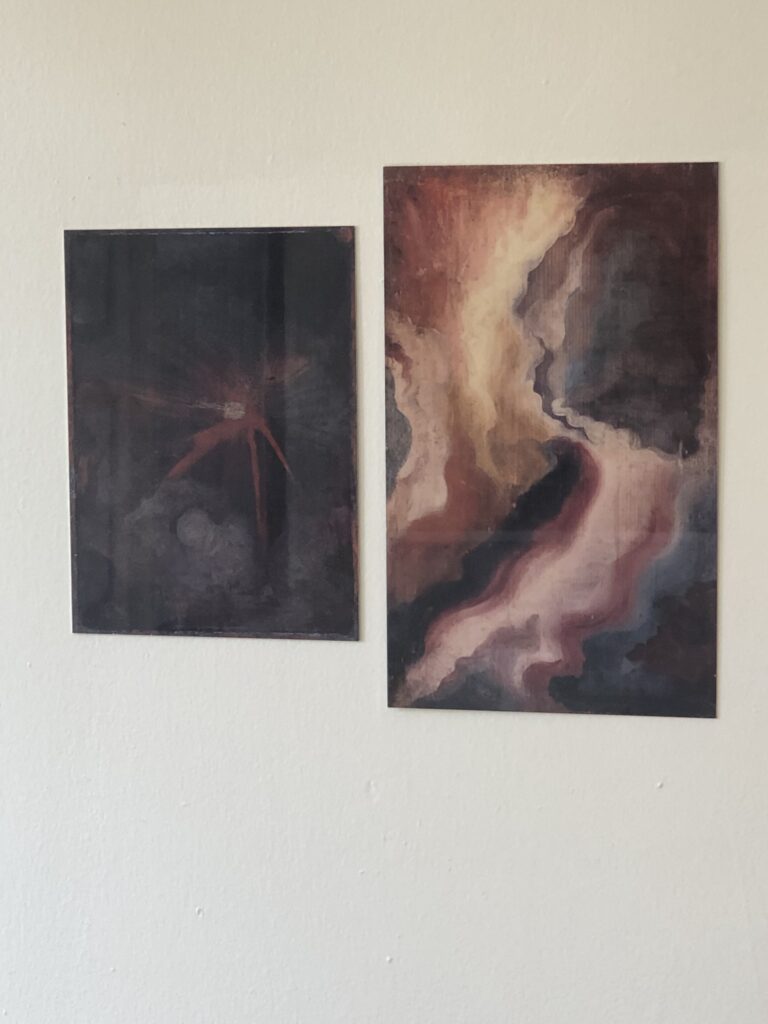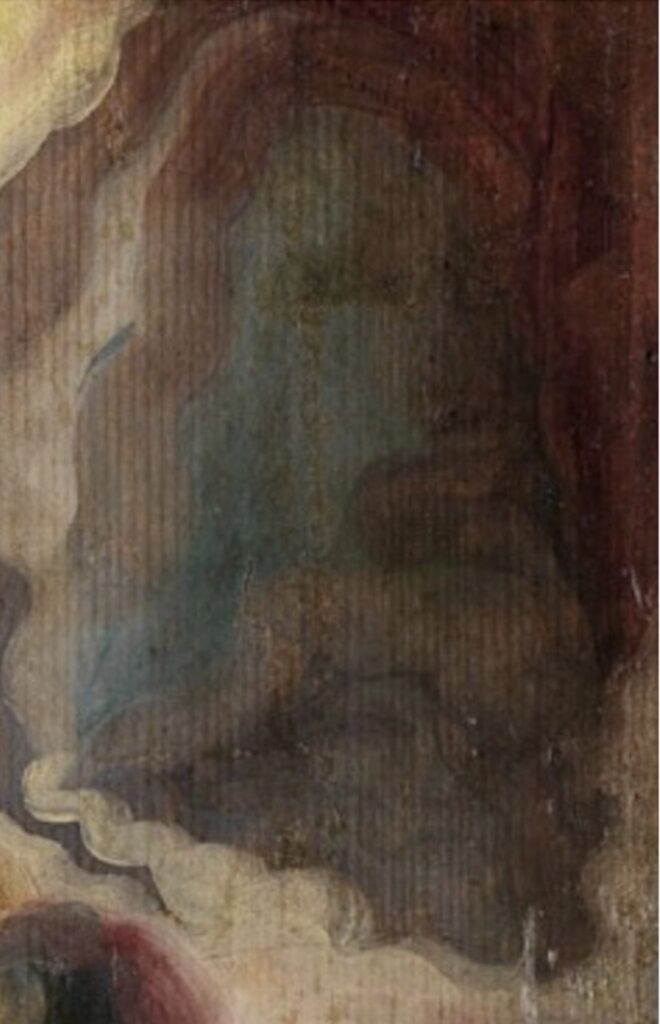
Do paintings, like people, have a fabricated online persona, and a different, “real” character offline? Or do paintings, like people, have one real existence, different aspects of which are manifested online and in the real world?
These Albrecht Dürer Facsimile Objects have been propped, taped, and laid out in front of me for a little more than a week now, and while I expected them to live different than their 500-yo painted counterparts, I am struck by how they also differ from their digital images.
And I don’t just mean they’re impossible to photograph, because that is not the case. They’re very easy, even pleasant, to photograph, but it is maddeningly hard to capture the retinal, physical experience of them in my phonecam.
Partly, that is my own doing; I could have made them matte finish, or even printed them on wood panels, which is now a thing, and which, arguably, would scoot them a little closer down the facsimile line towards their originals. But the mirror finish is not incidental, I think. Like the aluminum panel itself, the highly reflective surface never lets you forget you’re looking at an image–and holding an object–because you’re probably reflected in it. Maybe rather than facsimiles of the paintings, they’re objects that create facsimiles of the experience of seeing the paintings? I’m still working it out, and would love to hear your thoughts (and, for those who have some Facsimile Objects, your experiences).
Two things that hit different: AD FO (D1), the meteorite, looks darker in photos than it does in person. When natural light hits it, it absolutely glows; it’s wild. [Of course, the sunlight that brings it to life will also, over an extended time, deconstitute the pigments with which it’s printed. Please don’t get these Facsimile Objects and think you’re good, now you never need to make any effort to see these Dürers in person again.]

Also, it’s an admittedly small sample, but every person I know who’s seen AD FO (D2), the abstracted agate tempest, all four of us, immediately see a figure in the dark, upper right corner. That is no cave, and no decorative hardstone [above]. It looks like a Norse deity as drawn by the D’Aulaires, or Finn from Adventure Time, dressed as an old man, holding Bambi. Surprisingly, none of the scholarly literature I can find addresses these possibilities. But it was wild how instant that figurative visual read was compared to the digital–and possibly to the original? Or is it just blindingly obvious that there’s no way Dürer would have painted a figure here, on the back of a suffering Jesus, or then, or like this?
Anyway, you have no more than two or six weeks to experience these for yourselves. Each Facsimile Object will only be available [below] while the originals are inaccessible in their closed museums, probably until April 17 (D2) and May 18 (D1), respectively, though it is always subject to change.
[29 May Update: The Kunstalle Karlsruhe is reopening for visitors with negative COVID tests, or proof of vaccination or recovery. If there’s a buy button visible below, you’re good, but this will be the last day (D2) is available. (D1) became unavailable upon the reopening of The National Gallery on 17 May.
Thanks to all who engaged this project.] THIS JOINT IS SHUTTING DOWN AT 11:30PM EST, btw.
